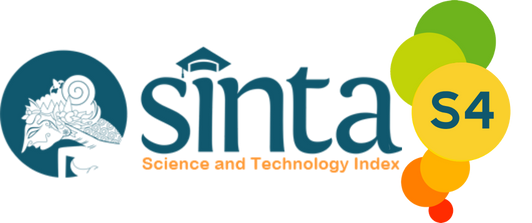Religious Tolerance Messages on Social Media: Insights from Deddy Corbuzier's 'Log in' Program
DOI:
https://doi.org/10.35719/aladalah.v27i1.438The rise of social media has intensified challenges related to misinformation and interfaith conflicts, underscoring the critical need for platforms promoting religious tolerance. This study investigates the "Log in" program on Deddy Corbuzier's YouTube channel, which uniquely employs interactive interfaith dialogue to foster understanding in Indonesia's pluralistic society. Previous studies emphasized the role of static social media content in advancing tolerance, leaving gaps in examining dynamic, dialogue-driven approaches. This research identifies messages of tolerance categorized into faith, sharia, and morals, demonstrating the flexibility and inclusivity necessary for harmonious interfaith relations. The study used qualitative descriptive methods and narrative content analysis to analyze ten representative videos featuring religious leaders from diverse traditions. The findings highlight the program's novelty in using humor and dialogue to bridge religious divides, effectively conveying tolerance messages to diverse audiences. Despite the program's success, challenges persist, such as combating hate speech and measuring the impact on societal attitudes. Recommendations include broader digital platform studies and policy support for moderating intolerance online. The study contributes to academic discourse on digital interfaith engagement, offering insights into leveraging social media for global harmony amidst cultural and religious diversity.
Downloads
References
Abid, A. A., Shami, S., & Ashfaq, A. (2021). Facebook and hate speech: Analyzing relationship between consumers’ attributes and Islamic sectarian content on social media in Pakistan. Journal of Islamic Thought and Civilization, 11(1). https://doi.org/10.32350/jitc.111.2
Akhtar, M., Rao, M. A. A., & Kaplan, D. (2023). Islamic intellectualism versus modernity: Attempts to formulate coherent counter-narrative. Journal of Islamic Thought and Civilization, 13(1), 257–269. https://doi.org/10.32350/jitc.131.18
Al-Astewani, A. (2023). Religious responses to Covid-19 in England: An analysis of the key socio-legal themes. Millah: Journal of Religious Studies, 22(1), 1–18. https://doi.org/10.20885/millah.vol22.iss1.art1
Andok, M. (2023). Comparative analysis of digital media usage in Hungarian religious communities. Millah: Journal of Religious Studies, 22(1), 181–204. https://doi.org/10.20885/millah.vol22.iss1.art7
As’ad, A., Putra, D. I. A., & Arfan. (2021). Being al-wasatiyah agents: The role of azharite organization in the moderation of Indonesian religious constellation. Journal of Islamic Thought and Civilization, 11(2), 124–145. https://doi.org/10.32350/jitc.11.2.07
Ayya, A. A. (2022). Narasi toleransi beragama di media sosial: Studi atas akun Twitter Komunitas Katolik Garis Lucu. Proceeding of International Conference Cultures & Languages, (ICCL), 1(1), 338–352. Retrieved from https://ejournal.uinsaid.ac.id/index.php/iccl/article/view/5775
Brynjolfsson, E., & McAfee, A. (2014). The second machine age: Work, progress, and prosperity in a time of brilliant technologies. W.W. Norton & Company.
Budiyanto. (2023). Toleransi beragama dan harmonisasi sosial dalam perspektif Islam. Educate: Journal of Education and Culture, 1(3), 56–68. https://doi.org/10.61493/educate.v1i03.63
Castells, M. (2010). The rise of the network society (2nd ed.). Wiley-Blackwell.
Creswell, J. W. (2016). Research design: Qualitative, quantitative, and mixed methods approaches (4th ed.). Sage Publications.
Corbuzier, D. (2023, April 17). Romo datang Onad won! Yakin?: Eps. 26 (Catholic priest comes Onad won! Sure?). [Video]. YouTube. https://www.youtube.com/watch?v=9EtDR6R4ZDg
Corbuzier, D. (2023, April 12). Boris bergamis bikin histeris!: Eps. 21 [Boris in a trench coat causes hysteria!]. [Video]. YouTube. https://www.youtube.com/watch?v=79cCPNcrvdI
Corbuzier, D. (2023, April 19). Kali ini Hindu turun tangan!: Eps. 28 [This time Hindus take action!]. [Video]. YouTube. https://www.youtube.com/watch?v=pNhfgO4PUdM
Corbuzier, D. (2023, April 4). Tiga agama duduk bareng, adu debat?!: Eps. 13 [Three religions sit together, debating?!]. [Video]. YouTube. https://www.youtube.com/watch?v=V1dO-RN-K3o
Corbuzier, D. (2023, April 20). Kenalan sama agama yang followersnya paling sedikit!: Eps. 29 [Getting to know the religion with the fewest followers!]. [Video]. YouTube. https://www.youtube.com/watch?v=5vemVjbTKck
Ebrahimi, M., Yusoff, K., & Rosman, A. S. B. (2021a). Understanding several characteristics of Islam and good muslim: A study of university students in Malaysia. Journal of Islamic Thought and Civilization, 11(1), 22–42. https://doi.org/10.32350/jitc.111.02
Ebrahimi, M., Yusoff, K., & Rosman, A. S. B. (2022b). Moderation in Islam: A comparative case study on perceptions of international students in Malaysia. Journal of Islamic Thought and Civilization, 12(1), 253–269. https://doi.org/10.32350/jitc.121.15
Fanindy, M. N., & Mupida, S. (2021). The shift of literacy among millennials as the result of radicalism spreading in social media. Millah: Journal of Religious Studies, 20(2), 195–222. https://doi.org/10.20885/millah.vol20.iss2.art1
Gereffi, G. (2018). Global value chains and development: redefining the contours of 21st century capitalism. Cambridge University Press.
Hamonangan, R. P., et al. (2021). The comparative study: Theological analysis of tole-rance between Islam and Christianity traditions. Kontemplasi: Jurnal Ilmu-Ilmu Ushuluddin, 9(1), 23–39. https://doi.org/10.21274/kontem.2021.9.1.184-204
Ihsan, A. F. A., Febriyanti, N., & Syakuuroo, A. (2021). Gus Dur`s multicultural da`wah and its relevance to modern society. El Harakah: Jurnal Budaya Islam, 23(1), 103–122. https://doi.org/10.18860/eh.v23i1.11642
Indriyanti, A. N., & Khoiruroh, M. (2020). Collaboration Nahdlatul Ulama tolerance roads and Muhamadiyah da’wah. PalArch`s Journal of Archaeology of Egypt/ Egyptology, 17(7), 3475–3484. Retrieved from https://archives.palarch.nl/index.php/jae/article/view/1928
Islam, M.H. (2017). Tolerance in perspective of Qur’an and Bibel: Comparative analysis of religious tolerance in diverses community. Humanistika: Jurnal Keislaman, 3(2), 185–197. https://doi.org/10.36835/humanistika.v3i2.160
Juliansyahzen, M. I. (2023). Ideologization of hijrah in social media: Digital activism, religious commodification, and conservative domination. Millah: Journal of Religious Studies, 22(1), 155–180. https://doi.org/10.20885/millah.vol22.iss1.art6
Krippendorff, K. (2018). Content analysis: An introduction to its methodology (4th ed.). Sage Publications.
Leiner, B. M., Cerf, V. G., Clark, D. D., Kahn, R. E., Kleinrock, L., Lynch, D. C., ... & Wolff, S. (2009). A brief history of the internet. ACM SIGCOMM Computer Communication Review, 39(5), 22–31. https://doi.org/10.1145/1629607.1629613
Lestari, P. D. (2022). Wacana toleransi beragama dalam Chanel YouTube Cahaya untuk Indonesia episode Sabrang: Kenapa kamu harus merendahkan orang lain untuk mengangkat dirimu? International Conference on Cultures & Languages (ICCL), 1(1), 293–309. Retrieved from https://ejournal.uinsaid.ac.id/index.php/iccl/article/view/5773
Maawali, A. M. S. S. Al. (2021). The Omani experience of multi-religious coexistence and dialogue: A historical approach to the Omani principles and its luminous examples. Journal of Islamic Thought and Civilization, 11(1), 59–78. https://doi.org/10.32350/JITC.111.04
Mackie, J. L. (1977). Ethics: Inventing right and wrong. Penguin Books.
Musyarrofah, U., & Zulhannan, Z. (2023). Religious moderation in the discourse of Nahdlatul Ulama’s dakwah in the era of industry 4.0. Millah: Journal of Religious Studies, 22(2), 409–434. https://doi.org/10.20885/millah.vol22.iss2.art5
Nasution, N. P., et al. (2023). Implementasi toleransi beragama dalam perspektif Islam: Sebuah analisis literatur. At-Taqwa: Jurnal Pendidikan dan Studi Islam, 1(1), 15–28. https://doi.org/10.56765/attaqwa.v1i1.1
Neuendorf, K. A. (2017). The content analysis guidebook (2nd ed.). Sage Publications.
Putra, D. I. A. (2023). Representing the belief of Muslims: Role and actions of Qatar to encounter Islamophobia during 2022 World Cup. Journal of Islamic Thought and Civilization, 13(1), 14–33. https://doi.org/10.32350/jitc.131.02
Ridwan, N., & Mayasari, M. (2018). Pesan dan makna dakwah Islam dalam film: Analisis ini deskriptif pesan dan makna dakwah Islam dalam film Tausiyah Cinta. Jurnal Politikom Indonesiana, 3(1), 78–88. https://doi.org/10.35706/jpi.v3i1.1413
Rijaal, M. A. K. (2021). Fenomena intoleransi antar umat beragama serta peran sosial media akun Instagram Jaringan Gusdurian Indonesia dalam menyampaikan pesan toleransi. Syiar: Jurnal Komunikasi dan Penyiaran Islam, 1(2), 101–114. https://doi.org/10.54150/syiar.v1i2.41
Saehu, R., & Muchtar, I. H. (2023). Religious pluralism and harmony among Buddhist-Muslim communities living in East Lampung, Indonesia. Journal of Islamic Thought and Civilization, 13(1), 245–256. https://doi.org/10.32350/jitc.131.17
Saragih, J. R. P., Novalina, M., & Pakiding, H. (2021). Menggaungkan moderasi beragama melalui media sosial. Prosiding Pelita Bangsa, 1(2), 166–174. https://doi.org/10.30995/ppb.v1i2.517
Setyawan, D., & Nugroho, D. (2021). The socio-religious construction: The religious tolerance among salafi muslim and christian in Metro. Dialoq, 44(2), 190–203. https://doi.org/10.47655/dialog.v44i2.479
Shihab, M. Q. (2019). Islam yang saya anut. Lentera Hati.
Smith, J. A., & Jones, L. M. (2019). Promoting religious tolerance on social media: A case study of interfaith dialogue initiatives. Journal of Media Ethics, 34(2), 123–135. https://doi.org/10.1080/23736992.2019.1586987
Taylor, R. (2020). Dialogues on religious morality: Bridging ethical divides in a pluralistic society. Ethical Perspectives, 27(1), 45–62. https://doi.org/10.2143/EP.27.1.3287486
United Nations. (1948). Universal declaration of human rights. Retrieved from https://www.un.org/en/about-us/universal-declaration-of-human-rights
Wahyuni, L. S. (2019). Pesan-pesan dakwah akun Instagram @Sahabat_Islami dalam meningkatkan kesadaran keagamaan: Studi pada mahasiswa Komunikasi dan Penyiaran Islam (KPI) Fakultas Dakwah dan Komunikasi UIN Ar-Raniry. Jurnal Peurawi: Media Kajian Komunikasi Islam, 2(2), 56–72. http://dx.doi.org/10.22373/jp.v2i2.5889
Williams, D. (2021). Freedom of faith and expression in the digital age: Challenges and opportunities. Human Rights Quarterly, 43(3), 589–612. https://doi.org/10.1353/hrq.2021.0035
Yahya, S. (2018). Fiqh of tolerance. Aswaja Presindo.
Downloads
Section
License
Copyright (c) 2024 Muh Ali Bagas, Heriyadi, Wafda Firyal

This work is licensed under a Creative Commons Attribution-NonCommercial 4.0 International License.
This work is licensed under a Attribution-NonCommercial 4.0 International (CC BY-NC 4.0).

























 Al'Adalah licensed under Creative Commons Attribution-NonCommercial 4.0 International License.
Al'Adalah licensed under Creative Commons Attribution-NonCommercial 4.0 International License.